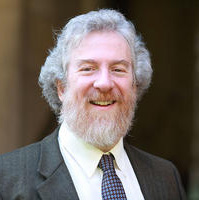Israel: Memory and Dreams (Part 1)

Yom Ha’atzma’ut, State of Israel Independence Day, is observed on Tuesday, April 16. It is not only a political and national celebration for the citizens of Israel and their supporters around the world, it is also a festival of the Jewish calendar. The Psalms of Hallel are recited, there is a special Torah reading, and there is an additional paragraph in the ‘Amidah of the Conservative Movement, in a style similar to Hanukkah and Purim (see the Rabbinical Assembly’s Siddur Sim Shalom for Weekdays, 42, 50, 343). So this day is not simply the Israeli equivalent of July 4—it is rooted, as is the State of Israel, in the ancient Jewish dream for the perfection of the world. The haftarah proclaims the towering vision of Isaiah (chapters 10–12) with images of peace and the renewal of our People in Zion: “the wolf shall lie down with the lamb . . . they shall not hurt or destroy in all My holy mountain” (Isa. 11:6, 9); “let them draw water in joy from the wellsprings of salvation!” (Isa. 12:3).
Within Israel, the celebrations with prayers, parades, and dancing in the streets—along with serious reflection—give depth and power to the day. Somehow, in the United States, the vibrant celebrations have become reduced to a little music, a long speech, and a few pieces of falafel. I believe that Jewish wisdom and experience calls for—even demands of us—a deeper and more symbolically powerful engagement with Yom Ha’atzma’ut. The Pesah seder is one of our most powerful and effective rituals, and I am delighted that this year a “seder for Yom Ha’atzma’ut” will be held at JTS, offering participants a ritual with four cups, varying strands of Aggadah(story/narrative), psalms and songs, a meal, and the ending words LeShanah Haba’ah Biy’rushalayim (“Next Year in Jerusalem”).
Perhaps most important of all is the day before Yom Ha’atzma’ut, known as Yom Hazikkaron (State of Israel Memorial Day). There is barely a family without a grave to visit, without a child or parent to recall who fell in the establishment or defense of Israel. In the United States, Memorial Day is observed mainly with shopping, grilling barbecue, and visiting the beach (with perhaps a quick parade of veterans). In Israel, the country comes to a standstill for two minutes when the siren blasts, and all sectors of Israeli society meet at Mount Herzl and other military cemeteries throughout the country.
We struggle to find ways to connect with Israel, a country inspired by dreams but wrestling with politics and challenges both internal and external. These two days invite us to rise above challenges of the day into visions for the future.
May our music and psalms, our poets and artists give wings to our hopes.



